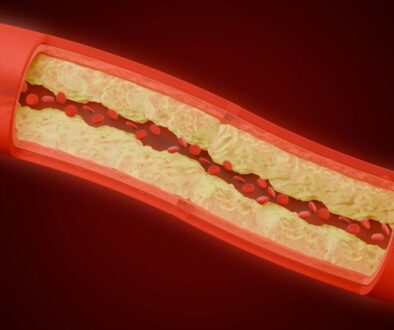Air pollution messes up pregnant women’s metabolism, spurs preterm births
Listen to the audio version of this article (generated by AI).
Researchers have long warned that tiny air pollutants — 30 times smaller than the width of a human hair — are linked to preterm births.
Now they’re one step closer to knowing why: Breathing in these tiny particles — largely caused by traffic, industry, burning fossil fuels and wildfire smoke — disrupts the molecules in pregnant women’s blood, raising the risk for preterm and early births, according to a new study from Emory University.
The study, published in Environmental Science & Technology, is the first to examine what the pollutants are doing to a pregnant woman’s body that could trigger early labor. The research comes as the Trump administration signals that it wants to roll back standards governing the release of particulate matter known as PM2.5, defined as fine inhalable particles with diameters that are generally 2.5 micrometers and smaller.
PM2.5 is behind an estimated 10% of all global preterm births, defined as babies born before 37 weeks of pregnancy, and preterm births account for 17% of deaths for children under 5 years old around the globe.
For those who survive those early years, being born too early can lead to health issues including cerebral palsy and respiratory problems. Donghai Liang, the study’s lead author and associate professor of environmental health at the Emory University Rollins School of Public Health, said the study is an important first step toward helping pregnant women who may be exposed to the tiny pollutants.
Messing up “the recipe”
Liang and colleagues analyzed blood samples from 330 pregnant Black women from the Atlanta area, including samples from a year prior to conception and some during the pregnancies. They estimated PM2.5 exposure based on where the women lived.
Twenty percent of the women delivered preterm babies and just over 16% delivered early term babies (born between the 37th and 39th weeks of pregnancy), both rates significantly higher than the average in the US. They found that women who were more highly exposed — both short- and long-term — to PM2.5 had altered molecules that are involved in both energy and amino acid metabolism, and also experienced disrupted protein digestion and absorption, both of which are crucial for a fetus’s development and immune function.
Women experiencing these molecular changes were more likely to have early and preterm births. These molecules involved in the mothers’ metabolism are the “building blocks” for the fetus’s development, Liang said. “It’s kind of like how when we add the wrong ingredient it can mess up the recipe.”
“It’s kind of like how when we add the wrong ingredient it can mess up the recipe.” -Donghai Liang, Emory University
The pollution seems to throw these building blocks out of balance and can cause stress in the mother, which could be behind the early labor and developmental problems for babies.
“Stress and stress exposure are sort of a leading hypothesis or theory for why some women experience substantially higher rates of pre-term births,” said Dr. Anne Dunlop, co-author of the study and a professor of gynecology and obstetrics at Emory University School of Medicine.
Dunlop added that these health markers also suggest impacts on mothers’ health — something that shouldn’t be ignored.
“You see the effect most immediately on the birth outcome, but I believe this is also an indicator that this exposure has had an impact on the woman’s health,” she said. “If a woman had a pre-term birth it means maybe we need to further investigate this woman’s metabolic and cardiovascular health.”
“Troubling disparities”

Elizabeth Bechard, national public health manager at Moms Clean Air Force, said the new study highlights the “troubling disparities faced by Black mothers.”
Black women have higher rates of preterm births — more than 14% — than the US average of 10%, and higher air pollution exposure. The average PM2.5 concentration in areas with largely Black populations in the US is, on average, 13.7% higher than that of white populations, according to a 2022 study.
“This is also an indicator that this exposure has had an impact on the woman’s health.” -Dr. Anne Dunlop, Emory University
Dunlop said the new study reinforces the disproportionate impact of pollution exposures and birth outcomes for Black populations.
“Because where one lives is sort of inextricably linked with race and economic status, there’s large racial disparities in exposure,” she said, adding that a lot of the participants lived near heavily used highways I-75, I-85 and I-20.
The US has seen a 37% decrease in the national average of PM2.5 levels over the past two decades, largely thanks to stricter regulations. However, the Trump administration said it is reviewing PM2.5 regulations, which the Biden administration strengthened by lowering the annual health standard for PM2.5 from 12 to 9 micrograms per cubic meter.
The Trump administration wants to protect human health but also unleash “the Golden Age of American prosperity,” said US Environmental Protection Agency administrator Lee Zeldin in a statement about the review, which was lauded by industry groups and panned by environmental and health advocates.
“Undoing these updated safeguards will directly harm babies, children, and mothers across the country,” Bechard said.
Liang and Dunlop said the next step in their research is to use this new molecular information to find out if there are ways to help exposed mothers — via nutritional supplements, diet changes or other interventions — to reduce the changes leading to early and preterm births.
(Featured photo by Earving Segura for Unsplash +)



